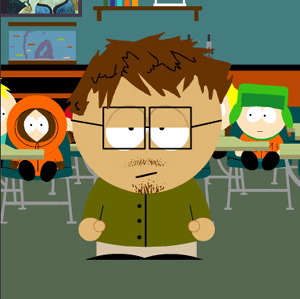Filmmaking in the 21st century
Some of you may have seen this already, but I'll post it for the rest because it's technically amazing.
The BBC series Timewatch analyzes and historical events and recently looked at the D-Day's Omaha Beach. The episode itself tried to spin unoriginal conclusions out of a whole lot of nothing, but that's not my point here.
The show uses recreations. Most TV documentaries about battles do. But these usually involve fewer than two dozen participants and use narrow shots to keep the empty battlefield hidden. Timewatch went another route, sort of. The show's CGI crew of three, with the help of some manual labour, invaded Omaha Beach to recreate the landing.
Show researcher Georgina Leslie explains in the show blog:
Colin Thornton, one of the CGI guys, posted a behind-the-scenes look at the process on YouTube:
Now, this does not match the quality of "Saving Private Ryan" despite claims that it does. The result falls short of most movie work, I'd say, but it is leagues ahead of the standard TV military documentary. But imagine where this process will take us. Don't think of it in terms of studio movies, though. Those already use computing power to replace extras - look at the Lord of the Rings trilogy of movies.
This technology is so fascinating not for what it can do for major productions, but for what it can do for the hobbyist. The line between pro and amateur in camera and editing tech has already blurred, although the hardware and software remain a tad pricey. These guys devoted four days to the show's recreation. What could someone do with a dozen people and a week? What will they be able to do in five years? Expect a great leap forward for homemade short films.
The BBC series Timewatch analyzes and historical events and recently looked at the D-Day's Omaha Beach. The episode itself tried to spin unoriginal conclusions out of a whole lot of nothing, but that's not my point here.
The show uses recreations. Most TV documentaries about battles do. But these usually involve fewer than two dozen participants and use narrow shots to keep the empty battlefield hidden. Timewatch went another route, sort of. The show's CGI crew of three, with the help of some manual labour, invaded Omaha Beach to recreate the landing.
Show researcher Georgina Leslie explains in the show blog:
One of the most fun parts of filming is for the computer graphics (CGI) sequences. Timewatch has its own team dedicated to CGI (Neil Wilson, Steve Flynn and Colin Thornton) who have come out to Normandy with a car laden with Rangers’ uniforms and fake plastic guns. They are here for two days to film some basic drama reconstruction sequences that will form the basis of their D-Day landing scene. In order to catch low tide when the beach is at its widest, we head for the beach at dawn whereupon the three boys spent several exhausting hours dress up in the uniforms and run up and down the sand, as I operate the Z1 camera. They carefully plan it so that each run is in a different part of the frame. That way, when they are back in the office, they can layer these frames up in the computer until it looks like there are hundreds of men landing on the beach – rather than just three. Later they will drop in beach obstacles and landing crafts, based on images they have gathered from books – and also small explosions, filmed separately again. As well as the beach landing scene, they have to film a sequence of cliff climbing at Pointe du Hoc – to illustrate what Ike and his fellow Rangers had to do on D-Day. We find a small 10ft sand dune which the boys clamber up head-on into the camera. I help hold up the green screen making sure it fills the frame behind the boys. The green screen means that when it comes to the edit, they can drop in a different background – in this case, the sea and Pointe du Hoc cliff-line.
Colin Thornton, one of the CGI guys, posted a behind-the-scenes look at the process on YouTube:
Now, this does not match the quality of "Saving Private Ryan" despite claims that it does. The result falls short of most movie work, I'd say, but it is leagues ahead of the standard TV military documentary. But imagine where this process will take us. Don't think of it in terms of studio movies, though. Those already use computing power to replace extras - look at the Lord of the Rings trilogy of movies.
This technology is so fascinating not for what it can do for major productions, but for what it can do for the hobbyist. The line between pro and amateur in camera and editing tech has already blurred, although the hardware and software remain a tad pricey. These guys devoted four days to the show's recreation. What could someone do with a dozen people and a week? What will they be able to do in five years? Expect a great leap forward for homemade short films.




2 Comments:
Happy birthday to you, happy birthday to you, happy birthday dear webs, happy birthday to you. :-)
I must concur with Elvi
Post a Comment
<< Home